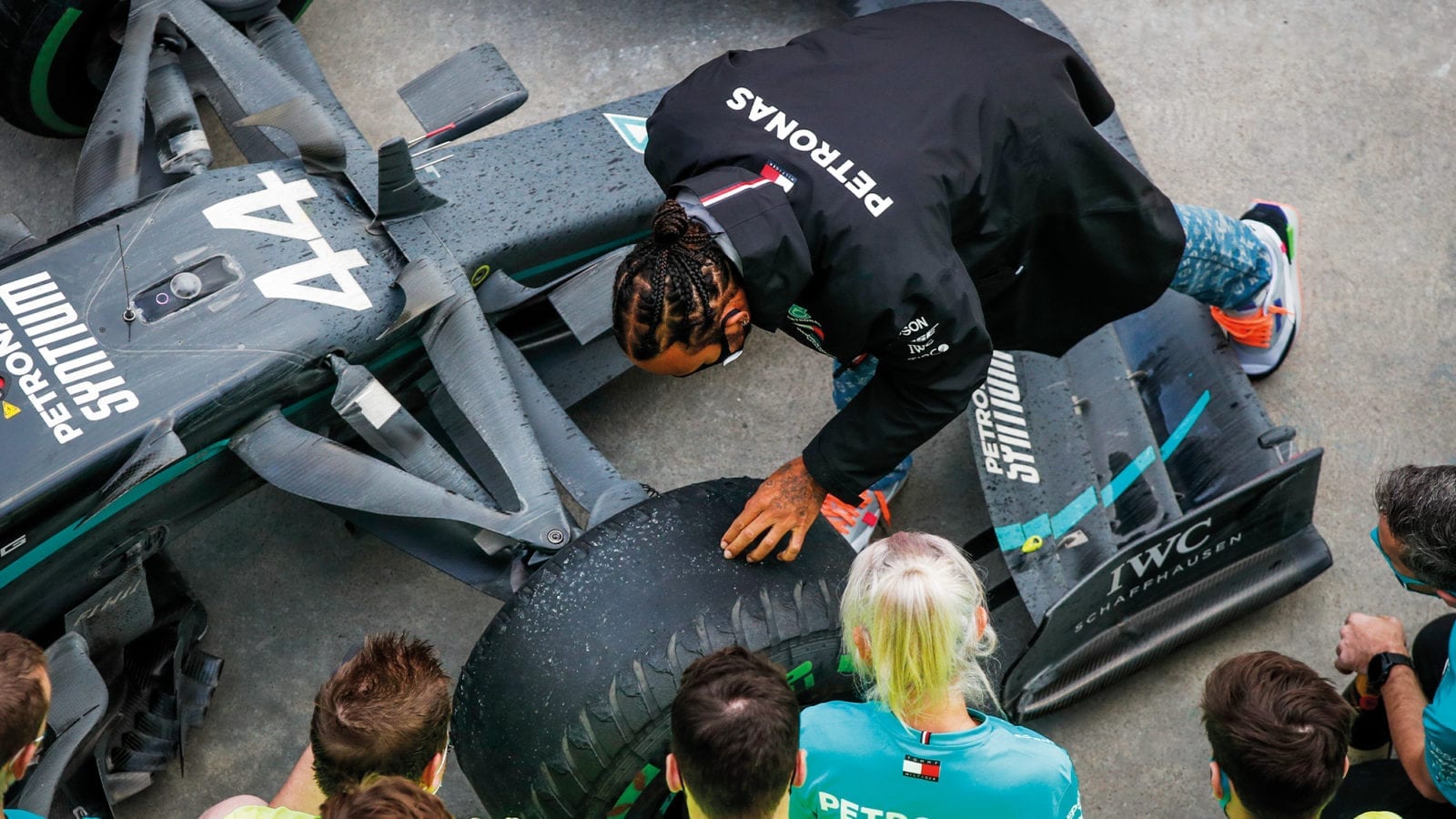F1 needs a grip on tyre temperature
New track surfaces and cool conditions give drivers a conundrum when it comes to their Michelin tyres

Hamilton takes a personal check of tyre wear at the Turkish GP
Florent Gooden / DPPI
The Portimão and Turkish grands prix were each notable for the striking lack of grip from the newly resurfaced tracks. In the case of Istanbul Park, the resurfacing was completed only 10 days before F1 arrived. Although unpopular with the drivers, it made for some great racing.
But what may be of particular significance was the effect of the cool track temperatures. “Whenever the tyres are just on the verge of being too cold,” said Mercedes’ James Vowles in Portimão, “the racing becomes really good. I think it’s because they no longer become too hot when you’re closely following another car. So you can stay tight in the leading car’s slipstream onto the straight. We saw it at last year’s British Grand Prix too.”

Cold tyres add to the excitement in Portugal
Rafael Marchante/Getty Images
The inability of current F1 cars to follow each other closely, and thus the difficulty of overtaking, has always been laid solely at the door of aerodynamic turbulence. Clearly this is a major factor. But the evidence of Portimão suggests that tyre temperatures play a much bigger part than previously assumed.

